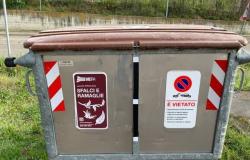«Tourism today is among the most important economic assets of our region, and on which Piedmont will have to increasingly focus. We have climbed the national rankings year after year and are now among the most requested Italian destinations. Precisely for this reason, the time has come to reflect and review the organization of the tourist offer and promotion in our territory, to make it even more competitive with respect to the changes and evolution of the markets». The leader of Brothers of Italy in the Regional Council Paolo Bongioanni anticipates one of the major themes on which he intends to work in the next legislature, for which he will run again in the elections on 8 and 9 May as the leader of Giorgia Meloni’s party in the province of Cuneo.
The organization of tourist Piedmont today is mainly based on six Atl, the local tourist agencies that divide the regional territory: Alexala for the Alessandria area, that of the Cuneo area which Bongioanni directed for twenty-one years from 1998 to 2019 before joining the Regional Council, the Tourism Board of the UNESCO lands of Langhe Monferrato Roero , the Atl Turismo Torino e Provincia, the Tourist District of the Lakes in Stresa and the latest addition, the Lands of Upper Piedmont Biella Novara Valsesia Vercelli. The councilor underlines: «They all do an important job of valorisation, promotion, information and welcome. In this they are supported by consortia of marketing operators and supported on a larger scale by the regional agency VisitPiemonte, which deals with the strategic development and promotion of tourism in Piedmont and its quality agri-food products. The consortia also managed the Piedmont Holiday Voucher with great success».
Tourism, however, is an ever-changing world evolution. Apparently very distant factors such as international economic situations, conflicts and geopolitical relations, the watershed represented by Covid which left nothing the same as before influence a sector where markets, types of demand, expectations and spending capacity are continually redefined. Those who want to remain competitive must have the courage – when necessary – to completely reset their paradigms and approach the subject in a totally new way. And this is the case of Piedmont.
«When the Piedmont Region established the ATLs way back in 1996 – explains Bongioanni – the criterion of administrative boundaries was chosen”. It was a Piedmont that was starting to rediscover itself as beautiful, to invent a future of tourism development that it would not have even imagined until then. «Everything has changed since then. The Winter Olympics, the UNESCO recognition of Langhe Roero and Monferrato, the boom in food and wine and outdoor tourism, the immense work done by businesses, consortia and local authorities with the constant support of the Region to renew and increase their offer. The bet paid off. But precisely for this reason, that distribution on a territorial basis must be rethought today».
The boundaries of the original ATL have been modified several times over the years to adapt to the changes. Now we need to make a qualitative leap and get to a deeper level structural and conceptual reorganization. «We must evolve – explains Bongioanni – from an organization on a geographical-political basis to one based on the product. Today tourists, both Italian and international, choose their destination and plan their stay not simply based on where they want to stay but on the experience they intend to live, share and preserve in their heritage of emotions and memories. Sports and outdoor tourism, food and wine, cities of art, skiing, wellness… Piedmont today is able to offer tourist products capable of intercepting any social group and origin. Precisely for this reason it must reorganize itself and promote itself through an offer of homogeneous and transversal products and no longer based on administrative and provincial subdivisions that make no sense. And which, above all, tourists are not interested in». A reform that will naturally have to be built from the bottom up, in a 360° dialogue with companies, institutions, consortia and categories. And for this reason it will be able to incorporate the requests of those who every day – even in the dark period of the pandemic – work to develop and grow tourist Piedmont.
Among the first objectives what Bongioanni wants to bring home in the new legislature is the immediate refinancing of regional law 18, in support of tourism businesses. Work must then continue with the Ministry of Tourism to bring sector reforms to completion, ranging from ENIT to those key figures in the tourism professions.
Compared to other tourist regions in Italy, Piedmont has an advantage that we tend to underestimate. Its land borders with Europe, which put it in direct communication with markets and audiences within reach and with enormous development potential. «We must create paths capable of thinking beyond administrative and national borders». How to strengthen the cross-border link between the tourist offer of the Cuneo area and its natural outlet to the sea embodied by the Riviera and the French Riviera. «Nice airport – underlines Bongioanni – today it is the main tourist hub of Europe. With its Alps that flow into the sea, the Cuneo area offers an amazing setting for cosmopolitan tourism, with high spending capacity and great attention to quality such as that which lands on the French Riviera and which will find with us a cutting-edge offer in products, services and a total leisure experience extended throughout the year. We talked about it at length in working groups with my friend, the mayor of Nice, Christian Estrosi, and with the mayor of Imperia, Claudio Scajola. And now the temporal perspective of a new legislature and the political perspective of a new Parliament and European Commission offer space to achieve concrete resultsthe”.
The opportunities are enormous. «I’m thinking of skiing in the winter resorts of Cuneo. To outdoor tourism for the intermediate seasons, with the ancient white roads that saw the ancient Via del Sale as a trailblazer project. And I am naturally thinking of food and wine, where a constantly innovating classic such as the luxury experience to be enjoyed in the Langa with Barolo, truffles and its excellent restaurants has now been joined by a novelty absolutely worth discovering: the gastronomic offer of the mountains and Cuneo valleys, which has been able to open up to the contemporary by creatively recovering ancient traditions and products».
There remain issues to be resolved, such as the return to complete road usability of the Tenda and an overall rethinking of cross-border connections, to be redesigned from a strategic perspective and at a European level. But this does not mean we need to lower our guard or fall back on minimalist programs. «On the growth of the tourist relationship between Piedmont, the Riviera, Monaco and the French Riviera – anticipates Bongioanni – we will also invest strongly through the cross-border projects financed by Alcotra and by what Europe will make available to us over the next five years. And this is another reason to decide to count more at the national level in the new Parliament and in the new majority in Brussels. This will generate important resources for the creation of an attractive and diversified cross-border tourism product with which Piedmont will finally be able to capitalize on its potential.».




